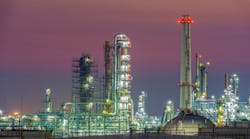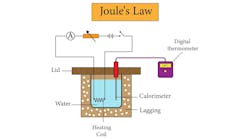New beginnings and a new writer for the Chemical Processing Energy Saver column mark the new year. As an avid reader of CP, I have thoroughly enjoyed the past columns by my predecessor, Alan Rossiter. I am deeply honored to serve as your next columnist.
I’d like to start off this column by noting big changes are happening in our industry. Because of high energy prices and regulatory changes, we are under pressure to reduce emissions. New technologies are emerging to save energy and bring the industry to a net zero standard. As a consultant in the field of energy efficiency, energy transition, emission reduction and decarbonization programs, I’m delighted to share my experiences with you.
With that in mind, I would like to introduce a simple but useful tool to help you reduce the cost of energy imports while optimizing the efficiency of shaft-power production. You can argue reducing energy cost is not always equal to emission reductions, and that may be true. However, many refining and petrochemical operators are driven by energy costs to become more efficient and reduce emissions.
First, let’s consider some concepts. Chemical plants use shaft power to drive equipment like pumps, compressors, fans, blowers and other rotating equipment. This shaft power can be provided by electrical motors, steam turbines, gas turbines and sometimes direct coupling with turbo expanders to transfer kinetic energy from a high-pressure process source to drive a pump or compressor. At many sites, the steam turbines and gas turbines may also be used as drivers to generate power, which in turn will be used for electrical motors. Each of these drivers operates on different efficiencies.
Because of high energy prices and regulatory changes, we are under pressure to reduce emissions.
The concept of price equivalent efficiency (PEE) can be used to determine which drivers to use to generate shaft power and whether you need to focus on increasing power imports or on-site generation. The PEE is defined as the ratio of cost of marginal fuel divided by the cost of marginal power.
PEE(%) = Cost of Marginal Fuel (in $/MWh) / Cost of Marginal Power (in $/MWh) x 100%
Marginal fuel is defined as the variable amount of fuel imports that will change if you produce more steam to drive steam turbines or produce more power with your gas turbine in your cogeneration or combined heat and power plant. The cost of marginal power is the cost of power imports in this methodology.
Typically, an external (cogeneration) power plant, such as a utility plant, produces the imported power that uses fuel, too. With these factors in consideration and the inefficiencies of these power plants, the PEE typically ranges from 25% to 60%. This means that on an equivalent energy basis the fuel cost is 25% to 60% compared to the cost of imported power. The PEE can differ based on power tariffs, day and night tariffs and summer and winter tariffs. These will determine your power generation strategy on a continuous basis.
For example, consider your site uses a steam-turbine generator with a condensing cycle. When taking the boiler’s efficiency into consideration, the machinery’s overall cycle efficiency typically ranges from 25% to 30%. With a PEE under 25%, this generator will run more efficiently and minimize your power imports. With a PEE over 30%, you would prefer to import power and shut down (or minimize production of) this generator. This can potentially change between day/night import power tariffs.
Recently, I visited a refinery in South America to improve the cost of their energy imports. A quick calculation showed a PEE surpassing 120%. This scenario appeared unusual. The refinery benefited from cheap renewable power imports but paid high natural gas prices. As no power generation will ever be more efficient than approximately 90%, the refinery had to shut down all shaft-power production by steam and gas turbines, where sparing and reliability made it possible, while maximizing power imports. This allowed the refinery to reduce its operating costs and overall emissions.
I look forward to sharing more stories like this one in future columns.



